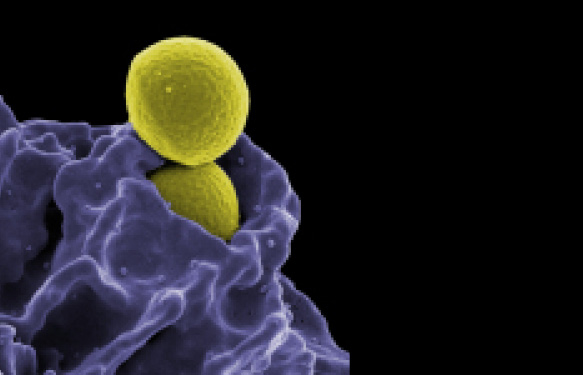The complement system helps the ability of antibodies and phagocytic cells to clear pathogens from an organism. It is part of the innate immune system that is not adaptable and does not change over the course of an individual’s lifetime. However, it can be recruited and brought into action by the adaptive immune system. The complement system is also used in research laboratories for in vitro assays during vaccine development, cytotoxicity testings… But how to select to most appropriate Rabbit or Guinea pig complement according to research applications and sample types?
The complement system consists of a number of small proteins found in the blood, in general synthesized by the liver, and normally circulating as inactive precursors (pro-proteins). When stimulated, proteases in the system cleave specific proteins to release cytokines and initiate an amplifying cascade of further cleavages. The end-result of this activation cascade is massive amplification of the response and activation of the cell-killing membrane attack complex. Over 30 proteins and protein fragments make up the complement system, including serum proteins, serosal proteins, and cell membrane receptors. They account for about 5% of the globulin fraction of blood serum and can serve as opsonins.
The following are the basic functions of complement:
- Opsonization – enhancing phagocytosis of antigens
- Chemotaxis – attracting macrophages and neutrophils
- Cell Lysis – rupturing membranes of foreign cells
- Agglutination– clustering and binding of pathogens together (sticking)
For over 50 years, CEDARLANE® has been producing complement, using special processing techniques to yield products with high complement activity and low background cytotoxicity. Another important point, is that it’s possible to find the right complement for each species.
Let’s take a look at the different complements available and see which one to choose according to your applications and type of samples!
Rabbit Complement
Standard Rabbit Complement
Rabbit Complement (frozen or in lyophilized) is derived from a pool of normal rabbit serum. It is intended for use as a source of complement for any of the standard lymphocytotoxicity procedures utilizing human peripheral blood lymphocytes (PBL’s), including HLA-ABC tissue typing.
Low-Tox-H Rabbit Complement
Low-Tox-H Rabbit Complement (frozen or in lyophilized) is a normal rabbit serum that has been processed for low toxicity to human peripheral blood B-lymphocytes. It is intended for use as a source of complement for HLA-DR tissue typing and all standard lymphocytotoxicity assays, particularly those that utilize cells sensitive to lysis by pooled normal rabbit serum. The cells are pre-incubated with the appropriate antiserum, then incubated with the complement source. After the appropriate time, the degree of cytotoxicity is scored. The conditions of testing will vary depending on the cell type and method of scoring.
Low-Tox-M Rabbit Complement
Rabbit serum (lyophilized) provides the most potent source of complement for cytotoxicity techniques utilizing antisera to mouse lymphocytes. However, rabbit serum is very toxic to mouse lymphocytes, particularly thymocytes. This toxicity can be reduced significantly by appropriate absorptions.
Low-Tox-R Rabbit Complement
Low-Tox-R Complement is derived from a highly potent mammalian source of complement, and is adsorbed with agarose and sheep erythrocytes to reduce nonspecific cytotoxicity to rat lymphocytes. This process provides an excellent source of complement for cytotoxicity techniques utilizing antisera to rat lymphocytes.
Rabbit Complement MA
Rabbit Complement-MA is intended for use as a source of complement in procedures utilizing monoclonal antibodies to human lymphocytes.
Baby Rabbit Complement
The serum is pooled from normal rabbits 3-4 weeks old and is intended as a source of rabbit complement for cytotoxicity studies. The complement is tested for activity against peripheral lymphocytes using monoclonal primary antibodies. Baby rabbit complement is added to human peripheral blood lymphocytes that have been pre-incubated with monoclonal antibodies. The sensitized cells are incubated in the presence of baby rabbit complement for the appropriate length of time, and then scored for degree of killing.
Guinea Pig Complement
Standard Complement Guinea Pig
The reconstituted serum is intended for use in systems requiring an active source of Guinea Pig complement including hemolytic assays, complement fixation, and hemolytic antibody titrations.
Hemo Lo Complement Guinea Pig
Cedarlane Hemo-Lo Guinea Pig Complement is designed specifically for sensitive antibody forming cell plaque assays utilizing free or haptenated SRBC as indicator cells. This reagent is pre-absorbed with sheep erythrocytes to reduce background hemolysis.
Low-Tox Complement Guinea Pig
Low-Tox Guinea Pig Complement is a highly potent source of guinea pig complement, which has been absorbed to remove background toxicity to mouse lymphocytes. Each batch is tested for high complement activity and low background toxicity to mouse thymocytes.
What is your preferred complement for your research?
Leave your comments here, and if you’d like some expert advice in identifying and using the best complement, just fire away any questions!




